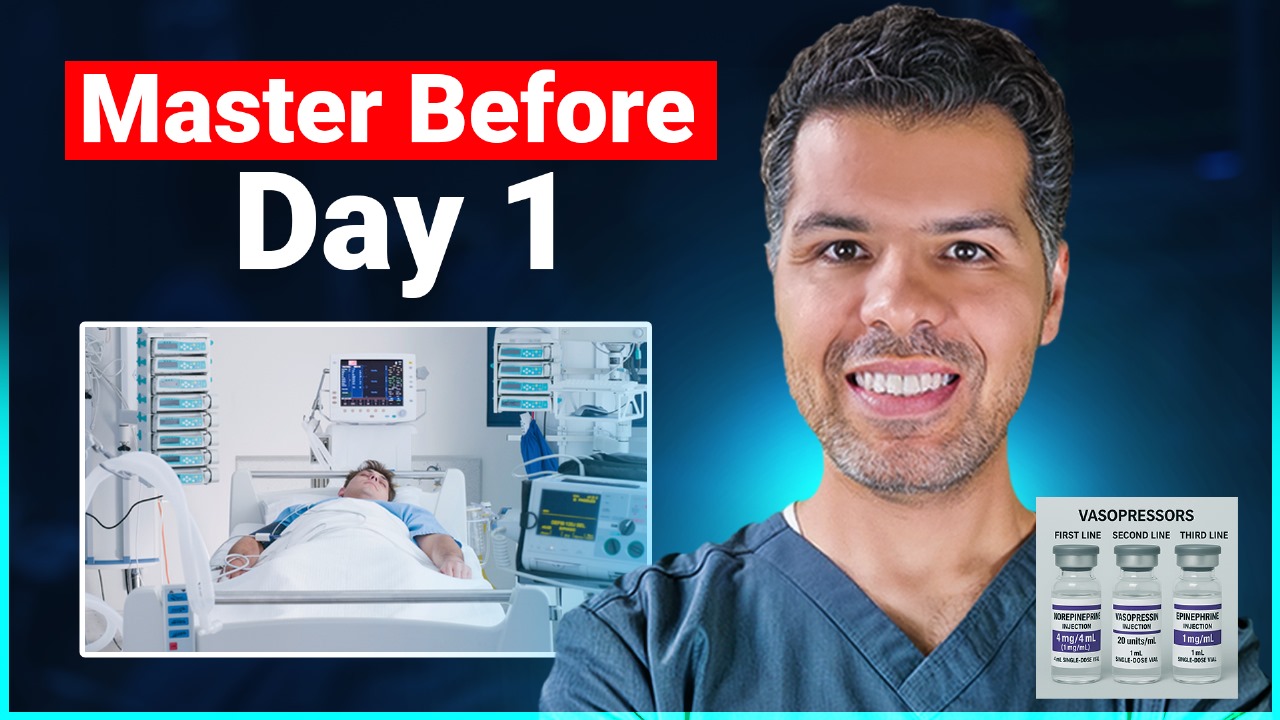Introduction
I can’t remember the last time I finished a shift without a call about a patient in acute pain. In this post, I’ll share a practical, easy-to-use guide to help you choose the right analgesia for your patients.
Pain severity scale
The first and most important step—often overlooked—is to assess the severity of pain using a standardized pain scale. In the hospital, this is typically a numerical rating scale, where patients are asked to rate their pain from 0 to 10. A score greater than 6 is generally considered severe.
Mild pain
This is pretty straightforward. Oral acetaminophen alone or in combination with a low-dose oral NSAID can be used. An ideal mild pain regimen would consist of:
- Acetaminophen 650 mg orally every 4 hours as needed.
- Ibuprofen 400 mg orally every 4 hours as needed.
The nurse should administer either option, but not both at the same time. They may alternate between the two if needed.
Personally, I prefer the sole use of acetaminophen in the mild pain category.
Moderate pain
A high-dose Oral NSAID with or without low-dose IV acetaminophen.
IV NSAIDs are an option here, as well. In such a case, oral NSAIDs should be discontinued. An ideal regimen would consist of:
- An NSAID (Pick one):
- Naproxen 500 mg orally twice daily as needed.
- Ibuprofen 600 mg orally every 6 hours, or Ibuprofen 800 mg orally every 8 hours as needed.
- Ketorolac 15 mg IV every 6 hours as needed.
- If NSAIDs are contraindicated or inadequate, Acetaminophen 650 mg IV every 6 hours as needed can be added.
“Don’t use oral and IV NSAIDs together”
Severe pain
This is the category where opioids should be used! Opioids should be reserved for severe pain only, including oral & IV opioids! This may seem odd, as a lot of hospital pain protocols include low-dose oral and IV opioids for moderate pain. Please avoid that unless there is a contraindication to use acetaminophen and NSAIDs!
Why am I saying this?
Adding opioids for moderate pain will likely lead to unnecessary and avoidable use of opioids!
Just imagine your patient is having moderate pain based on the assessment scale, and you have the option to pick between a low-dose opioid or an NSAID, most of us will unconsciously lean toward picking the stronger analgesic, which is an opioid here, although a dose of naproxen would have been probably adequate!
So, unless there is a contraindication to use NSAIDs or Acetaminophen, reserve opioids for severe pain only, please.
But does that mean opioids are the only option for severe pain? Of course not!
High-dose IV Acetaminophen and IV NSAIDs are pretty effective in severe pain as well.
So an ideal regimen for severe pain analgesics would consist of:
- IV Acetaminophen or IV NSAIDs (First line)
- Oral opioid (Second line)
- IV opioid (Last to use).
I will go for IV NSAIDs or Acetaminophen first, oral opioids second, and IV opioids are our last resort if the patient’s acute pain remains inadequately controlled
Remember that NSAIDs are first-line analgesics in the following conditions:
- Renal colic, IV Ketorolac in particular, is effective here.
- Musculoskeletal pain like arthritis pain, pleuritic-type chest pain, rib fracture, and muscular strains.
- Incisional post-operative pain.
Acetaminophen is particularly effective in most types of headaches alone or in combination with caffeine.
Also, the location of pain may warrant analgesia avoidance, like chest pain of cardiac origin, where NTG should be used instead.
Now, which opioid should we use and what dose? I refer you to an older post where I discussed the use of opioids. You can read it here
Persistent severe pain
In persistent severe pain where the patient keeps requiring recurrent doses of opioids despite treating or while treating the underlying cause of pain, we need to try to reduce the pain level with other means and consequently reduce the need for IV opioids:
- Adding scheduled (Not PRN) oral acetaminophen or oral NSAID, remember to discontinue their IV equivalents.
- Adding Gabapentin
- Adding a scheduled low-dose oral opioid can be considered if previous measures didn’t help reduce the use of IV opioids.
Let me give you an example:
A 64-year-old lady was admitted with a pelvic fracture, she’s in severe pain her severe pain regimen consists of the following:
- Ketocorolac 15 mg IV every 6 hours as needed
- Oxycodone/acetaminophen 5/325 mg PO every 4 hours as needed
- Morphine 4 mg IV every 6 hours as needed
You reviewed her chart and found that she received 12 doses of IV morphine over the last three days, her nurse reported that IV morphine is the only thing keeping her pain under control and she asked you if there’s anything we could do to help her pain control.
Of course, the first thing I do is check if the patient has received IV Ketorolac and oxycodone/acetaminophen or if the nurse just jumped to IV morphine, if they have not been tried, I will ask the nurse to try them first and assess the response! If they have already been given with inadequate response, then we can do the following:
- Add scheduled high-dose oral ibuprofen, or naproxen, or acetaminophen
- Add Gabapentin
- If that remains inadequate, we add a scheduled oral opioid for a few days while escalating the Gabapentin dose
Please remember this about the use of Acetaminophen and NSAIDs:
- Don’t combine oral and IV forms of the same medication or the same class within the same severity category, for example, don’t use oral naproxen and IV ketorolac together for moderate pain, or oral acetaminophen and IV acetaminophen together for severe pain.
- Combining acetaminophen at doses higher than 2 g/day together with an NSAID isn’t more effective than an NSAID alone and might be associated with a higher risk of gastrointestinal complications! So keep that in mind!
- The total daily amount of acetaminophen shouldn’t exceed 4 g/day including all forms of acetaminophen, whether oral or IV, and the one combined with oral opioids.
More options for severe pain
There are other options to consider in severe pain cases:
- Regional block performed by surgery or anesthesia can be helpful in rib fractures or postoperative pain
- Ketamine can be considered in severe pain refractory to opioids.
- Dexamethasone can be considered where swelling and edema are suspected as a contributing factor to the pain line in disk herniation or metastatic bone pain.
- Local anesthetics like lidocaine patches are not that effective in acute severe pain management, but they can be used as an adjuvant therapy to other analgesics for superficial musculoskeletal pain.
- Muscle relaxants can be considered when muscle spasms may contribute to the patient’s acute pain






10 Medications You Must Master Before Your ICU Rotation
Positive troponins! MI or not?
Comprehensive Guide to Antibiotic Spectrum: Gram-Positive, Gram-Negative, and Anaerobic Coverage
Comprehensive Guide to Antibiotic Spectrum: Gram-Positive, Gram-Negative, and Anaerobic Coverage
Comprehensive Guide to Antibiotic Spectrum: Gram-Positive, Gram-Negative, and Anaerobic Coverage
How to Measure Blood Pressure Correctly At Home
How to Measure Blood Pressure Correctly At Home
How to Measure Blood Pressure Correctly At Home